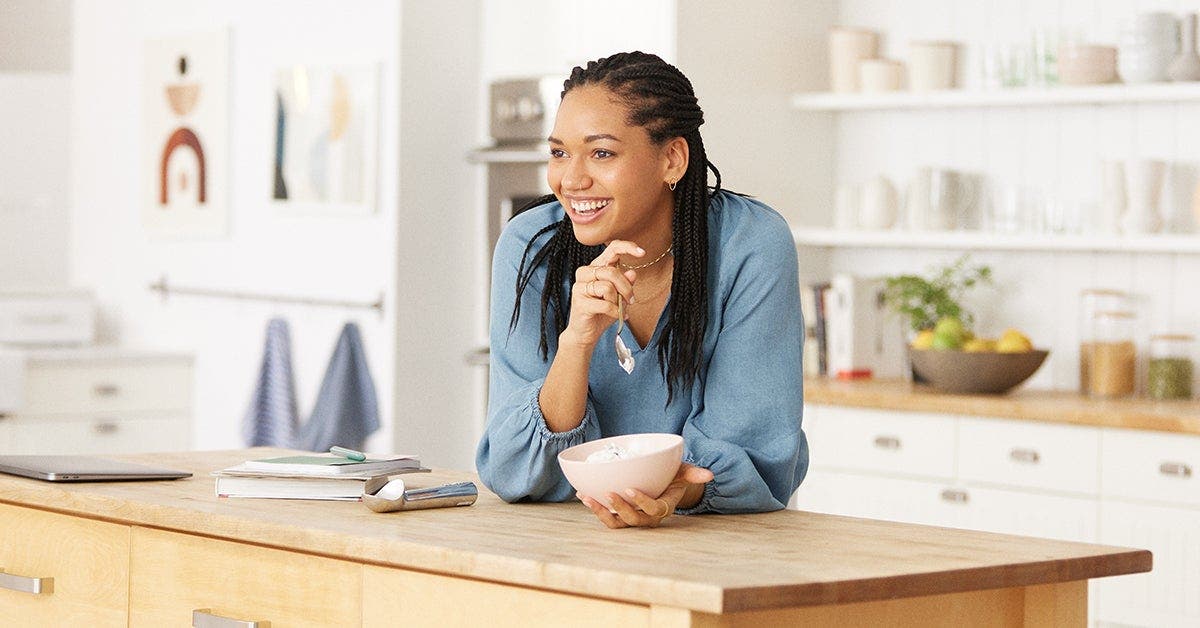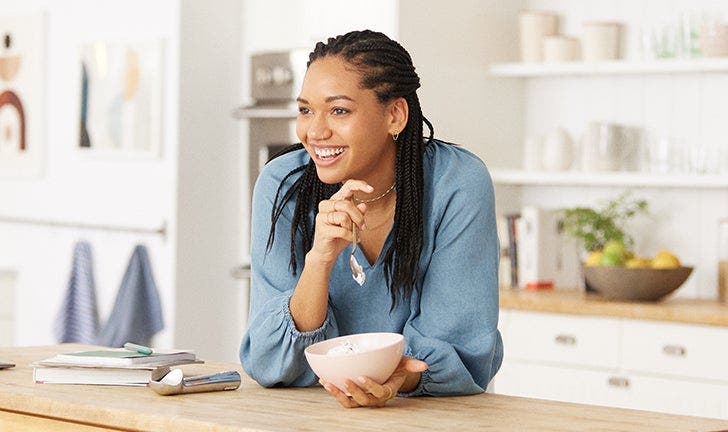Why We Care About Added Sugar


At WW, we are always innovating our weight loss program to keep on top of the latest in nutritional science as well as make the plan more customized and livable. That’s why PersonalPoints, the latest iteration of our plan, now factors added sugar into the algorithm that calculates the points of food and drinks.
Essentially, foods with added sugar (as opposed to naturally occurring sugar) will tend to have higher Points values. Foods with added sugars tend to offer fewer nutritional benefits and can be low in fibre and protein, so we don’t get the benefit of feeling full from those nutrients and can end up eating more than we planned.
Our updated algorithm guides you toward foods higher in healthy fats, fibre, and protein, and lower in added sugars and saturated fats.
Reducing intake of foods that are high in added sugars, while still consuming foods with natural sugars, can improve health and can contribute to weight loss.
Because the new PersonalPoints plans are individualized and factor in sugar content, we are also able to offer tailored plans to people living with diabetes. When a person indicates they are living with diabetes, their ZeroPoint foods list will take that into account and not include foods with much natural sugar (i.e. no fruit, dairy, grains).
Natural vs. Added Sugar
Lots of things have naturally occurring sugars – fruit is a prime example. So, the difference between the two is pretty self-explanatory: natural sugars occur naturally in a food item, added sugars have been added during some form of processing of a food item.
How to Spot Added Sugars
Currently in Canada we do not have added sugar on our food labels, but we will by the end of 2022. For now, searching in the WW app or using the barcode scanner are great places to find out more about specific items.
Otherwise, it can help to know where a lot of added sugars are often found. Some of the major added sugar culprits are beverages – think soft drinks, fruit drinks, sweetened coffee and tea, energy drinks, alcoholic beverages, and flavoured waters. Others include cakes, pastries, candies, and syrups.
Smart Swaps to Reduce Added Sugar
Avoiding added sugar altogether can be difficult, but there lots of ways to reduce your intake of it. Here are some ideas for food and drink swaps, plus ideas for things you can make at home to reduce your added sugar intake:
Drinks
- Instead of drinking soda or juice, create your own flavoured drink by mixing either still or carbonated water with mint leaves, ginger, slices of lime, lemon, orange or any other fruit you love!
- Premade coffee drinks or coffee house favourites, like flavoured lattes or frozen coffee drinks, can have fair amounts of sugar. Try asking for half the syrup usually used in the drink.
- Plant-based milks, like oat, almond and coconut, can be sources of added sugar. Look for varieties labelled “no added sugar” or “unsweetened.”
Food
- Rather than having sugar-sweetened flavoured yogurt, try mixing up some non-fat plain yogurt with defrosted frozen berries. (Slightly defrosting them lets out their natural juices, which you can mix with the yogurt to get the flavour you want!)
- Mash up some fresh raspberries or blackberries in place of jam or jelly. You can even add in some chia seeds for a thicker consistency and added fibre/nutrients.
- Wanting a chocolate candy bar? Try a banana or apple dipped in melted dark chocolate instead!
- Breakfast cereals are often sources of added sugar. Look for unflavoured varieties and use the barcode scanner to find lower-Point alternatives. You can also try blending plain cereal, like bran or corn flakes, with a sweeter cereal.
- Nut butters and spreads can also be a source of added sugar. Look for varieties made with just nuts and salt (or only nuts).
Make your own
- Love pancakes? Try making your own homemade low-Point version instead of the sugar-laden traditional pancakes by blending banana and eggs. [Ratio: 1 banana to 2 eggs]. Top them with sauteed diced apples with cinnamon to replace syrup.
- Explore baking with pumpkin puree, applesauce, mashed bananas or pureed butternut squash.
- Instead of ice cream, try some banana “nice” cream by blending a frozen banana with non-fat milk or unsweetened nut milk and fresh or frozen fruit. Play around with the portions to get the consistency and flavour you want and top with your favourite nuts or seeds for an extra crunch.
- Love granola? Try making your own homemade trail mix so you can control the sugar content. Mix up your favourite nuts and seeds and add in some spices.
- Pre-made salad dressings often contain a lot of added sugar. Make your own by combining olive oil, lemon or vinegar, mustard and spices.
